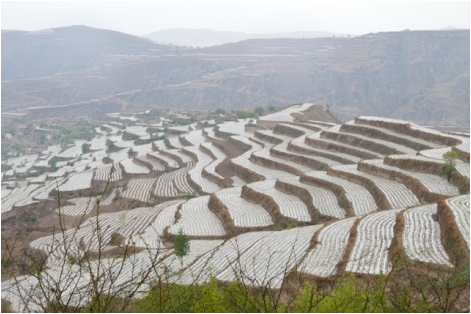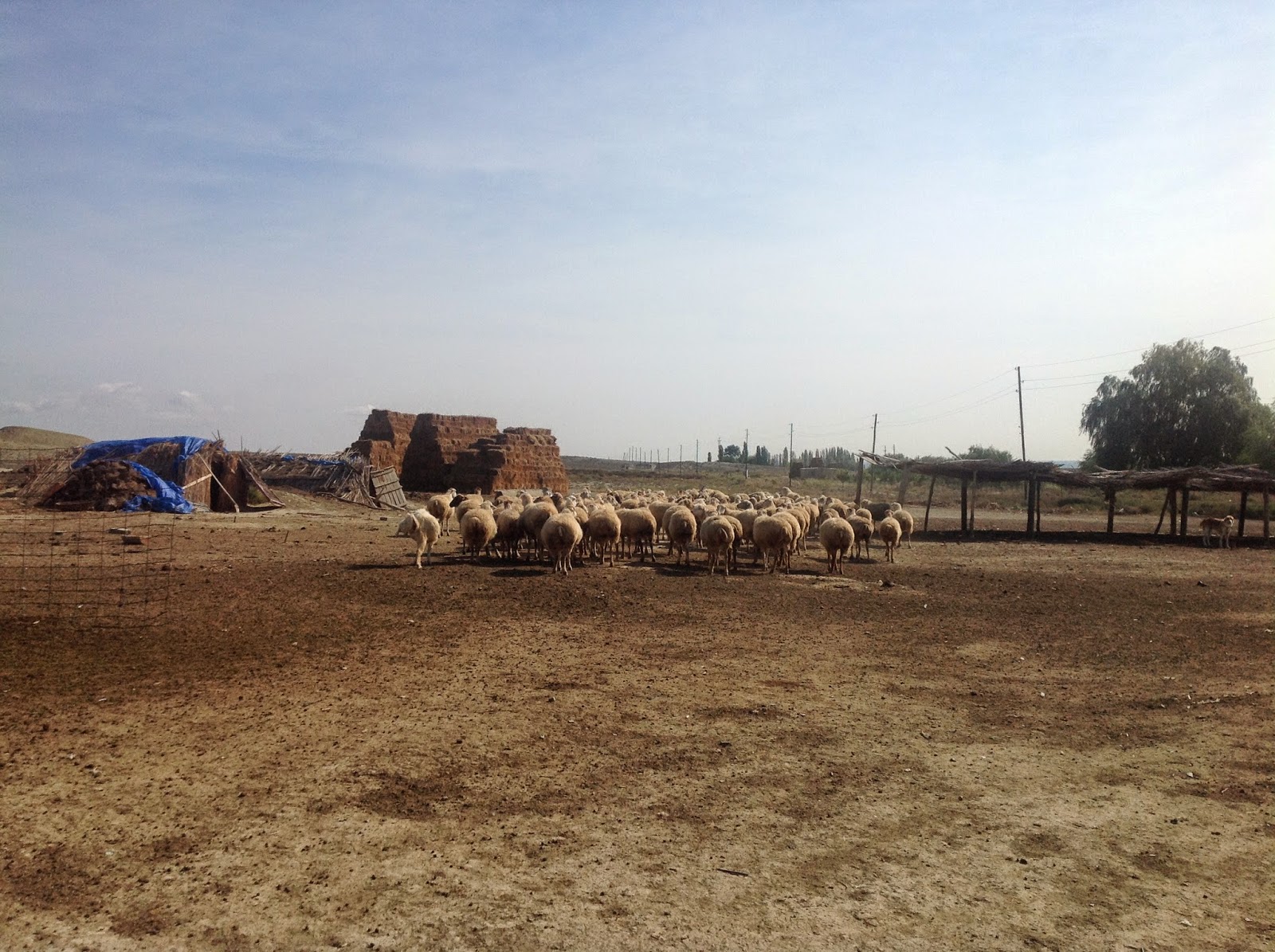Written by Mariana Castro Álvarez
Durante el mes de julio, el señor Kanayo F. Nwanze, el Presidente del Fondo Internacional de Desarrollo Agrícola (FIDA), y su equipo de dedicados especialistas en temas para América Latina y el Caribe viajaron a la Ciudad de México.
La agenda del viaje versó sobre diferentes actividades, sobre las cuales resaltan las reuniones con algunos de los representantes de Alto Nivel del gobierno Mexicano dedicados a la Agricultura, Hacienda, Desarrollo Social y asuntos forestales.
Además, se presentó un estudio regional sobre la agricultura familiar en América Latina, elaborado conjuntamente entre Centro Latinoamericano para el Desarrollo Rural (RIMISP) y el FIDA.
Parte de la misión consistió en una visita de campo a Oaxaca, en la que el sr. Nwanze, junto con delegados de la Comisión Nacional Forestal, visitaron un grupo de mujeres que han recibido capacitación en la producción de seda, en la sierra norte de dicho Estado mexicano. "Creemos que la población rural es parte de la solución a los problemas del mundo", mencionó el Presidente del FIDA. "Cuando las inversiones se han dirigido a las zonas rurales, hemos observado una y otra vez que las personas se han visto empoderadas para cultivar más alimentos, poner en marcha sus propios negocios, mejorar la nutrición de sus hijos y enviarlos a la escuela. Hemos visto como mujeres y hombres de las zonas rurales transforman sus comunidades".
Junto al Fondo para el Medio Ambiente Mundial y en asociación con la Comisión Nacional Forestal, FIDA financia en México un proyecto que está creando nuevos sistemas de aprovechamiento forestal sostenible y de fijación de carbono, al tiempo que introduce programas para el fomento de emprendimientos rurales, gracias a los cuales la población de las comunidades Santo Domingo Xagacía y Santa María Yalina se han visto beneficiados.
El proyecto con las mujeres de Santo Domingo Xagacía, está enfocado principalmente a la capacitación en la producción de seda, un proceso heredado de generación en generación, que además de su potencial para la generación de ingresos, contribuye a preservar la cultura local. A pesar de que esta es una región en la cual la pobreza extrema afecta a más de la mitad de la población, el Presidente del FIDA comentó que "las desigualdades pueden eliminarse si nos damos cuenta hasta qué punto las zonas urbanas y las rurales son interdependientes".
Por su parte, Josefina Stubbs, Directora de la División de América Latina y el Caribe de FIDA, quien también participó en la visita de campo, hizo énfasis sobre la importancia de coordinar los diferentes recursos que se destinan a las comunidades, para poder así lograr el mayor impacto posible en el desarrollo rural, en este caso de las mujeres productoras de seda.
“Hay que ver cuál es la manera de hacer al producto menos costoso y de calidad homogénea, para que pueda tener un mayor mercado (…) y mantener en la mente la importancia de conversar con algunas tiendas en Oaxaca o en la Ciudad de México, para ofrecerles la compra de prendas elaboradas con el mismo trabajo de las mujeres, el cual es de excelente calidad, mencionó Josefina Stubbs. Asismismo, comentó sobre un programa regional de apoyo a emprendimientos de mujeres rurales, el cual es financiado por el FIDA y ejecutado a través de ONU Mujeres.
Como parte de la agenda de trabajo, el equipo de FIDA visitó también la comunidad de Santa María Yalina, en la que seis jóvenes han puesto en marcha un pequeño negocio de venta de carbón vegetal.
Ahí se pudo constatar la viabilidad que tienen los negocios rurales liderados por jóvenes, con un enfoque de aprovechamiento sostenible de los recursos naturales. “El éxito de las poblaciones rurales depende de cuán bien estén organizadas. La estructura organizativa es sumamente importante para lograr cohesión, trabajar conjuntamente y diseñar planes de negocios que luego puedan generar mayores ganancias”, comentó el Presidente del FIDA con los jóvenes empresarios.
Al finalizar la visita, el sr. Nwanze recalcó: "Si las economías rurales no son dinámicas, las personas continuarán migrando hacia las ciudades en busca de trabajo. Necesitamos un mundo en el que la población, el empleo, los servicios y las oportunidades estén distribuidos de forma más equilibrada".
 |
| Kanayo F. Nwanze, el Presidente del FIDA ©IFAD/Katie Taft |
La agenda del viaje versó sobre diferentes actividades, sobre las cuales resaltan las reuniones con algunos de los representantes de Alto Nivel del gobierno Mexicano dedicados a la Agricultura, Hacienda, Desarrollo Social y asuntos forestales.
Además, se presentó un estudio regional sobre la agricultura familiar en América Latina, elaborado conjuntamente entre Centro Latinoamericano para el Desarrollo Rural (RIMISP) y el FIDA.
Parte de la misión consistió en una visita de campo a Oaxaca, en la que el sr. Nwanze, junto con delegados de la Comisión Nacional Forestal, visitaron un grupo de mujeres que han recibido capacitación en la producción de seda, en la sierra norte de dicho Estado mexicano. "Creemos que la población rural es parte de la solución a los problemas del mundo", mencionó el Presidente del FIDA. "Cuando las inversiones se han dirigido a las zonas rurales, hemos observado una y otra vez que las personas se han visto empoderadas para cultivar más alimentos, poner en marcha sus propios negocios, mejorar la nutrición de sus hijos y enviarlos a la escuela. Hemos visto como mujeres y hombres de las zonas rurales transforman sus comunidades".
 |
| Tejedoras de seda Oaxaca ©IFAD/Mariana Castro Álvarez |
Junto al Fondo para el Medio Ambiente Mundial y en asociación con la Comisión Nacional Forestal, FIDA financia en México un proyecto que está creando nuevos sistemas de aprovechamiento forestal sostenible y de fijación de carbono, al tiempo que introduce programas para el fomento de emprendimientos rurales, gracias a los cuales la población de las comunidades Santo Domingo Xagacía y Santa María Yalina se han visto beneficiados.
El proyecto con las mujeres de Santo Domingo Xagacía, está enfocado principalmente a la capacitación en la producción de seda, un proceso heredado de generación en generación, que además de su potencial para la generación de ingresos, contribuye a preservar la cultura local. A pesar de que esta es una región en la cual la pobreza extrema afecta a más de la mitad de la población, el Presidente del FIDA comentó que "las desigualdades pueden eliminarse si nos damos cuenta hasta qué punto las zonas urbanas y las rurales son interdependientes".
 |
| ©IFAD/Mariana Castro Álvarez |
“Hay que ver cuál es la manera de hacer al producto menos costoso y de calidad homogénea, para que pueda tener un mayor mercado (…) y mantener en la mente la importancia de conversar con algunas tiendas en Oaxaca o en la Ciudad de México, para ofrecerles la compra de prendas elaboradas con el mismo trabajo de las mujeres, el cual es de excelente calidad, mencionó Josefina Stubbs. Asismismo, comentó sobre un programa regional de apoyo a emprendimientos de mujeres rurales, el cual es financiado por el FIDA y ejecutado a través de ONU Mujeres.
| ©IFAD/Mariana Castro Álvarez |
Ahí se pudo constatar la viabilidad que tienen los negocios rurales liderados por jóvenes, con un enfoque de aprovechamiento sostenible de los recursos naturales. “El éxito de las poblaciones rurales depende de cuán bien estén organizadas. La estructura organizativa es sumamente importante para lograr cohesión, trabajar conjuntamente y diseñar planes de negocios que luego puedan generar mayores ganancias”, comentó el Presidente del FIDA con los jóvenes empresarios.
Al finalizar la visita, el sr. Nwanze recalcó: "Si las economías rurales no son dinámicas, las personas continuarán migrando hacia las ciudades en busca de trabajo. Necesitamos un mundo en el que la población, el empleo, los servicios y las oportunidades estén distribuidos de forma más equilibrada".





























.jpg)


























